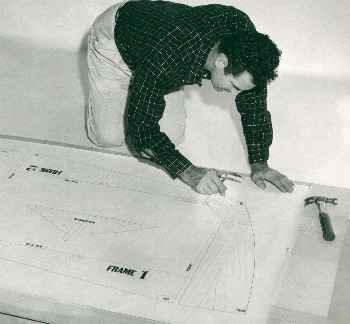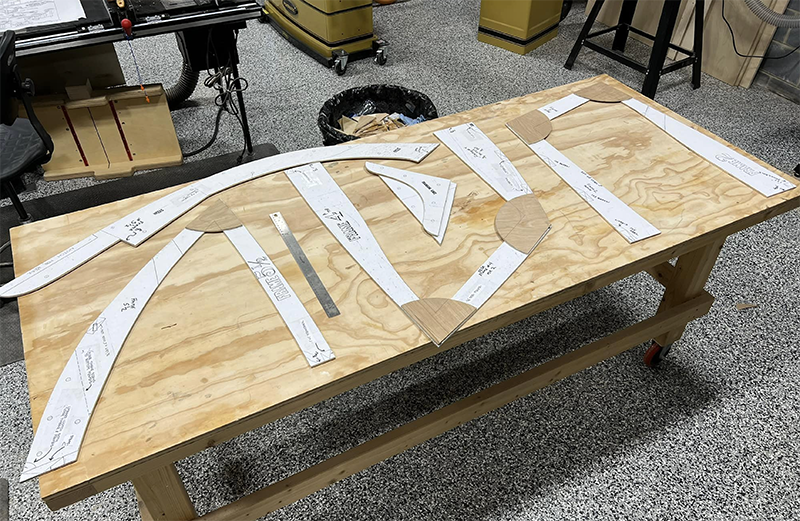 Why are Full Size Patterns so important?
Why are Full Size Patterns so important?
Most novices don't realize that with many boat plans the builder must first “loft," or actually redraw the lines of the hull to full size before they can even begin construction. Learning to loft from an often confusing list of dimensions (Table of Offsets) is a major project in itself. In addition, there are logistical problems in lofting, unless you happen to have a flat floor virtually as long as the boat for the layout.
At Glen-L we decided many years ago that this process alone was enough to discourage most beginners, and set out to find a better way. The result was the Glen-L Full Size Pattern system of boat building. In short, we do the lofting, to save you time, effort, and to prevent errors. It has taken a lot of time and experimentation to develop our pattern methods, but if you have ever tried to build a boat the “old way," we know you’ll feel it was worth the effort.
Full size patterns are available for most every Glen-L design. As the originator of the pattern systems, we have perfected the methods necessary to ensure absolute accuracy so that your Glen-L design can be duplicated just as the designer intended.
Pictured: Just one of several ways to use our full-size patterns to speed your building process
Which Parts of the Boat Are Patterned?
All of our designs (except for one or two that are clearly noted) provide full-size patterns for the structural members of the boat. In our online store, if you click on the title or item number of the design in question, it will list specifically which parts are patterned. For most, you’ll get patterns for all of the frames or bulkheads, transom, stem, transom knees, breasthook, etc. The frame patterns will be half-section patterns. Since the frames are the same on both sides of the centerline, we provide one half and the pattern is flipped to draw the other half. Instructions are provided for using the full size patterns and can be seen here as well.
Patterns are not provided for the planking of the boat, unless it’s a Stitch & Glue design which we’ll discuss later. Even if you follow the plans to a tee, each boat will vary making planking patterns worthless. Once you make your frames and set them up on the building form, this becomes the “pattern” for your planking. The plywood panels are simply leaned against your boat “skeleton” and then marked to shape. We have a really cool retro slide presentation showing how a boat goes together here that further explains this process.
Stitch and Glue designs are a different animal. In addition to patterns for the structural members, we also provide full size patterns for the planking unless noted otherwise. That means that virtually every piece of the boat is patterned which is what makes this method of construction excellent for the first time builder.
 CABIN PLANS
CABIN PLANS
Several boats have been designed without cabins and CABIN PLANS have later been added in response to builder requests. These plans contain all of the information and dimensions to build the cabin, including instructions. In many cases, the plans will be adaptable to several designs or offer cabin options for a single design. See the description on the design page for specific information.
Instructions
All of our plan and pattern packages come with detailed phase-by-phase instructions that walk you through the entire building process. The construction is in sequence but some variation is natural based on the needs of the builder. The instructions also provide a bill of materials (also online for each design) that lists the materials needed to build the boat as well as the types of wood recommended. A Fastening Schedule lists what fastenings are used for attaching the various parts together. We feel the instructions are quite complete, but if you have questions, we are here to help or you can post your questions on our Boatbuilder Forum that is available 24/7

